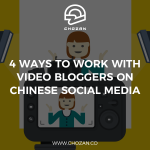Short videos are an industry in China. And they’re an industry that has witnessed rapid development thanks to the popularity of smartphones and upgraded communication networks.
In March this year, Kuaishou, a popular short video app, was on the receiving end of a 350 million USD investment from Tencent, and Alibaba put 2 billion RMB toward the transformation of Tudou from a large, formerly popular online video platform to a short video community.
Also, Yixia Technology, owner of Miaopai and Xiaokaxiu, both are popular short video apps in China, has already spent 2 billion to encourage short video content creators and producers by building several video creation bases and providing professional studios. Short videos are perfect for young, tech savvy people who take their phone everywhere and use it to access social media or to fill in short breaks in the day between other activities.
But which short video apps are the most popular in China? Who are the viewers of these short videos? How can brands market to them? What should brands take into consideration when launching short video campaigns? Let’s have a look!
Top 10 short video platforms in China
Similar to short video platforms like Viddy, Vine and Instagram, there are lots of short video platforms and apps in China where users can record real-time short videos and share them with friends. As for users, there were 153 million regularly watching China’s short videos in 2016. This is estimated to reach 242 million by 2017, an increase of 58.2%.
CIWEEK, an Internet content magazine, showed the top 10 short video apps in China in the first half year in 2016 and Kuaishou, Miaopai, and Meipai were the most popular.
Of these, there are actually two types of short video platform in China:
Comprehensive platforms — professional short video platforms
These platforms, such as Meipai, Miaopai, and Xiaokaxiu, provide a one-stop user experience. Users can use various shooting tools, effect settings and formats to use while filming or editing a video. They also offer a community for users to communicate and share with others.
Short videos uploaded on those platforms can also be shared to WeChat friends, WeChat Moments and Weibo.
Content recommendation — news apps
These platforms, such as Toutiao, NetEase, Tencent News, and Yidian Zixun, focus on suggesting popular or professional short videos. These platforms were originally news-based and mass communication oriented. They have millions of viewers and short videos recommended on these platforms can get huge traffic.
Who are the viewers?
The main users of China’s short video apps are young. Most of them belong to the post-90s generation.
According to a report published in March 2017 by JIGUANG, a big data provider, users aged 16 to 25 make up 39.7% of the total, while users aged 26-35 are at 33.3%. Meanwhile, over half of the users are female, making them 69.4% of the total number of users.
In terms of regions, 66.9% of the total come from third-tier and below third-tier cities in China. The top 3 provinces for viewer numbers are Guangdong, Henan, and Shandong.
How are brands using short video?
Short video is becoming a new favorite for brands for several reasons.
- Short videos can be used for various types of promotional materials, such as product reviews, product seeding, promoting brand culture and more.
- With interesting and meaningful content, short videos can deliver specific brand messages to a target audience while avoiding the annoyance that longer videos may cause.
- The production cycle of short videos is quick with great flexibility, which works well with brands’ marketing plans and budgets.
- Through audience interactions with short videos, brands can better understand their preferences, improve their user experience rapidly and come up with effective marketing plans quickly.
- Integrated campaigns launched on short video platforms can be creative and diverse.
The three cases below show some examples of how short videos are being used by brands:
Case One: Short Video x L’Oréal
Since the majority of short video viewers in China are female, content for women gets lots of attention and increases brand exposure.
In October 2016, L’Oréal conducted a Halloween campaign on Meipai. It encouraged users to upload and share their Halloween makeup videos for a chance to receive a free gift from L’Oréal. 11,393 users uploaded videos and the campaign videos got over 60 million views.
Case Two: Short Video x Shanghai Disneyland
For most brands, promoting offline traffic and sales is their main task. Shanghai Disneyland is a good example. The park officially opened in June 2016. Their biggest challenge was to attract new visitors. In October last year, they launched a short video campaign on Meipai.
Users were encouraged to upload short videos of happy moments at the park using the hashtag #The Most Beautiful Moment in Disney Shanghai# (#最美上海迪士尼#). Then they randomly chose participants and sent them gifts and free tickets. This campaign attracted a lot of attention from families and young people, increased park visitor numbers and promoted sales.
Case Three: Short Video x The United Nations
How do government institutions, like the United Nations, get the attention of young people?
The United Nations registered an official account on Meipai, and has more than 1 million followers. They post official content, such as conference information, lectures, forums and the like, alongside content to increase interactions with young users. For example, the United Nations posted a short video of Ban Ki-moon playing basketball and missing his shot.
Another short video showed United Nations staff dancing to popular songs. These videos received thousands of views.
Conclusion
When a brand plans to open an official account on a short video platform in China, and launches marketing campaigns on it, it’s better to keep the following in mind:
- Short videos are more suitable for brands in certain categories. According to their users characteristics (most of the users are young people), they’re particularly effective for brands in the FMCG (fast-moving consumer goods) category, fashion, cosmetics and IT.
- Before launching campaigns through short videos platforms, brands first need to choose the best one for them. On the whole, Miaopai and Meipai are recommended based on their huge user base and popularity.
- Remember users love and appreciate creative content. Content quality is the key to the effectiveness of a campaign.
- Celebrities and KOLs now produce the most popular content. Campaigns that cooperate with celebrities and KOLs can definitely achieve better results.
- Short video platforms can also be used by brands to refresh their image, release promotional information, manage customer relationships, conduct market research, deal with crisis PR, etc.
What do you think of the short video ecosystem in China? Do you plan to use short videos? Do you want to know more about short video campaigns?
Leave a comment below. We’re happy to answer your questions.
To get deeper insights into Chinese social media marketing and utilizing it to serve your business, join ChoZan, a training and resources platform for Chinese social media marketers.
Please follow our official WeChat account to get more updates about the latest news, feature updates and case studies.

Share this article on your favourite social media









